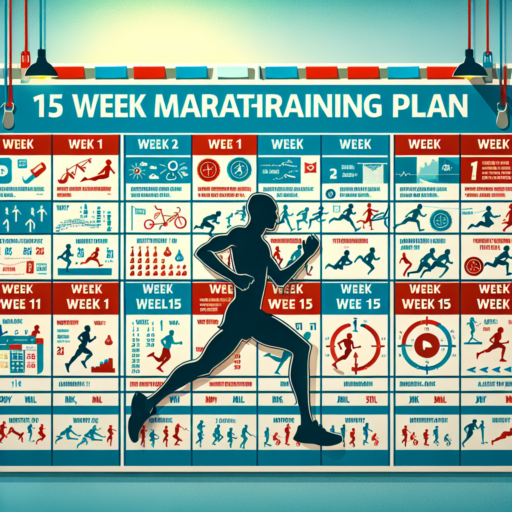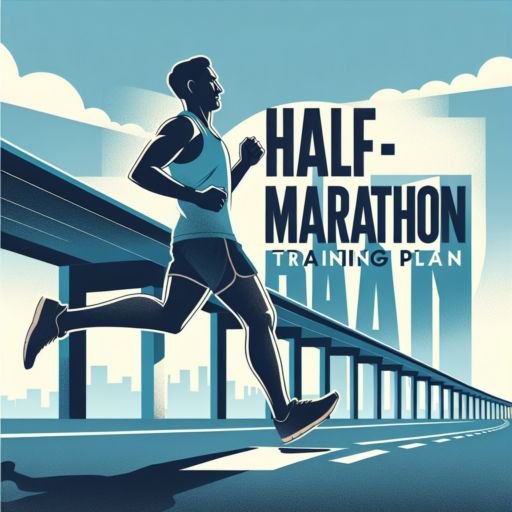Introduction to Couch to Marathon Training: Embark on Your Journey
Welcome to the transformative world of Couch to Marathon training, a journey that promises to take you from the comfort of your living room to the exhilarating finish line of a marathon. This guide is designed for beginners and those looking to understand what it takes to go from zero to marathon hero. Whether your goal is to challenge yourself, improve your health, or simply to see if you can do it, this journey is about more than just running.
Starting a marathon training program can seem daunting at first, especially for those who have little to no running experience. However, the Couch to Marathon approach is built on the principle that anybody, regardless of their current fitness level, can successfully train for and complete a marathon. The key lies in progressive training, which gradually increases in intensity and duration, preparing your body and mind for the demands of running 26.2 miles.
The initial phase of Couch to Marathon training involves building a solid running base. This doesn’t happen overnight; it requires consistency, patience, and determination. Many runners begin with a mix of walking and running, slowly increasing their running intervals as their endurance improves. It’s also a time to focus on complementary practices such as strength training, proper nutrition, and rest, all crucial components of a successful marathon training program.
Understanding the Foundations of Marathon Training for Beginners
Embarking on marathon training as a beginner can seem daunting, yet understanding its foundational elements makes the process more approachable and manageable. Initially, one must grasp the core principle that marathon training is not merely about running extensive distances; it’s about building stamina, endurance, and mental toughness. These qualities ensure that you can handle the physical and psychological demands of covering 26.2 miles. As we dive deeper, we’ll explore key aspects that are crucial for novices embarking on this journey.
Creating a Structured Training Plan
At the heart of marathon preparation is a well-structured training plan. Such a plan meticulously outlines daily and weekly running schedules, gradually increasing in difficulty to adapt your body and mind to the marathon’s demands. Importantly, it should incorporate variety—mixing long runs, short jogs, speed work, and rest days—to prevent burnout and improve overall performance. Additionally, cross-training activities like cycling or swimming are essential in developing complementary muscle groups, enhancing flexibility, and reducing the risk of injury.
The Importance of Proper Nutrition and Hydration
Nutrition and hydration are the fuel that powers your training engine. For marathon beginners, understanding the significance of proper diet and fluid intake is crucial. A balanced diet rich in carbohydrates, proteins, and healthy fats provides the energy needed for long runs and aids in recovery. Meanwhile, staying adequately hydrated, especially on long run days, cannot be overstressed. Key to this is learning to intake fluids before, during, and after runs to maintain optimal performance levels and prevent dehydration.
Creating Your Couch to Marathon Training Plan: Step-by-Step Guide
Embarking on the journey from a sedentary lifestyle to completing a marathon is a formidable challenge that requires dedication, patience, and a well-thought-out training plan. Starting from the couch and aiming for a marathon finish line is not just about running; it’s about transforming your lifestyle to accommodate the intense demands of marathon training. This guide walks you through essential steps to create a feasible and progressive couch to marathon training plan.
Assess Your Current Fitness Level
Before lacing up your running shoes, it’s critical to assess your current physical condition. Understanding your starting point will help you craft a training plan that’s realistic and reduces the risk of injury. Beginners should consider factors such as their ability to run or walk a certain distance, current activity levels, and any potential health concerns. This initial assessment will serve as the foundation for setting achievable goals and milestones in your training journey.
Set Realistic Goals and Milestones
Setting achievable goals is crucial for maintaining motivation and measuring progress. Begin by establishing a long-term goal of completing a marathon, then break this down into smaller, more manageable milestones. For instance, running a 5K without stopping, completing a 10K, and then a half marathon before the full 26.2 miles. Setting these intermediate targets not only boosts motivation but also prepares your body incrementally for the ultimate challenge. Remember to factor in recovery periods into your plan, allowing your body to adapt and heal.
Consistency is key in any training regimen, but especially in a couch to marathon plan. It requires building up your endurance and strength over months, incorporating rest days, and gradually increasing your mileage. A balanced approach that includes both running and cross-training exercises will enhance your overall fitness and help prevent overuse injuries. Listen to your body and adjust your plan as needed to ensure a safe and enjoyable journey to the marathon finish line.
Nutritional Guidelines to Support Your Marathon Training
Training for a marathon is a demanding physical endeavor that requires not just dedication to running but also a strategic approach to nutrition. Understanding the right balance of nutrients can significantly impact your performance and recovery. Consuming a well-balanced diet rich in carbohydrates, proteins, and fats, alongside essential vitamins and minerals, plays a crucial role in sustaining energy levels and enhancing endurance.
Carbohydrates are particularly vital for marathon runners as they serve as the primary fuel source during long-distance runs. Integrating a high-carb diet with a diversity of sources, such as whole grains, fruits, and vegetables, ensures sustained energy release. Timing your carbohydrate intake is also essential, with a focus on loading up on carbs before long runs to maximize glycogen stores and incorporating easily digestible carbs shortly before and during your runs for immediate energy.
Protein intake should not be overlooked, as it is key in repairing and building muscle tissue damaged during training. Lean protein sources like chicken, fish, tofu, and legumes are recommended to promote muscle recovery. Additionally, healthy fats from sources such as avocados, nuts, and seeds provide long-lasting energy, making them an integral part of a marathon runner’s diet.
Essential Gear and Equipment for Marathon Success
Preparing for a marathon requires not only intense training but also the right gear and equipment. Ensuring you have everything needed can significantly impact your performance and overall experience. Different aspects of the gear are crucial, from footwear to hydration systems. Every piece plays a pivotal role in aiding marathon runners to achieve their best on race day.
Choosing the Right Footwear
One of the most critical decisions a marathoner can make is selecting the appropriate shoes. Footwear should not only be comfortable but also tailored to the runner’s foot shape and running style. It’s essential to consider the level of support and cushioning a shoe offers. With an array of brands and models available, it’s beneficial to visit a specialist running store where you can receive tailored advice and even have a gait analysis done.
High-Performance Clothing
Never underestimate the power of high-performance clothing in enhancing your marathon performance. The ideal running attire should be made of lightweight, breathable materials that wick away moisture, keeping you dry and comfortable throughout the race. Additionally, opting for clothing with reflective elements ensures visibility during early morning or late evening runs. A perfect ensemble might include a breathable shirt, shorts or leggings specifically designed for long distances, and quality socks that can prevent blisters.
Hydration and Nutrition Systems
Hydration and nutrition are the linchpins of a successful marathon experience. Carrying a personalized hydration system, such as a handheld water bottle or a hydration vest, allows runners to maintain fluid levels without relying solely on race-provided water stations. Moreover, integrating easy-to-consume energy gels or chews into your gear can help maintain energy levels without causing gastrointestinal discomfort. Tailoring these choices to your personal needs and training outcomes is essential for optimal performance.
Incorporating Strength Training and Cross-Training into Your Program
Benefits of Combining Strength and Cross-Training
Incorporating strength training and cross-training into your fitness routine can yield significant benefits, enhancing not only physical strength but also improving overall athletic performance. Combining these training methods can help prevent injuries by improving body balance and muscular symmetry. Moreover, it boosts endurance, strengthens the cardiovascular system, and increases flexibility. This holistic approach ensures that multiple muscle groups are engaged, promoting functional fitness and reducing the risk of overuse injuries common in repetitive strain activities.
Designing an Effective Combined Training Program
Creating an effective program that incorporates both strength training and cross-training requires careful planning to balance the benefits of each. It’s essential to start with a solid foundation of strength training exercises that focus on major muscle groups, incorporating both free weights and bodyweight exercises. Once this foundation is established, integrating cross-training activities such as swimming, cycling, or even yoga can enhance your program. The key is to ensure variety in your training regimen to engage different muscle groups, improve agility, and maintain motivation. This varied approach can help in achieving a well-rounded fitness level, making your body more adaptable to different physical challenges.
Strategies for Integrating Strength and Cross-Training Effectively
To integrate strength and cross-training effectively, it’s recommended to alternate between different types of workouts throughout the week. For instance, dedicating specific days to strength training and other days to cross-training activities can provide the body with adequate rest between intense workouts. Additionally, focusing on low-impact cross-training activities on recovery days can aid in muscle repair and growth, complementing the hard work done during strength training sessions. This strategic approach not only maximizes performance gains but also keeps the training program exciting and less monotonous.
Recovery Strategies: Tips for Avoiding Injury and Burnout
When it comes to maintaining a healthy balance in our training routines, understanding recovery strategies is crucial. These methods are designed not only to prevent injuries but also to counteract the stress of everyday life, thus preventing burnout. By integrating these strategies into your regimen, you can ensure that your body and mind are getting the essential rest and recuperation they need to function optimally.
Importance of Adequate Rest
A cornerstone of any effective recovery strategy is ensuring adequate rest. It might seem counterintuitive for those eager to achieve fast results, but giving your body time to heal between workouts is fundamental. Adequate sleep, alongside strategic rest days, plays a critical role in avoiding overtraining, which can lead to injury and burnout. Rest is not a sign of weakness but is rather an essential component of a well-rounded training program.
Nutritional Support for Recovery
Nutrition also plays a vital part in the recovery process. Fueling your body with the right nutrients after a workout can significantly enhance your recovery rate and reduce the risk of injury. A focus on protein-rich foods to aid muscle repair, along with sufficient hydration, can make a substantial difference in how quickly and effectively your body recovers. Incorporating anti-inflammatory foods into your diet can also help reduce muscle soreness and improve overall recovery time.
By adhering to these recovery strategies, you can sustain a balanced and healthy training routine that supports long-term progress and wellbeing. Prioritizing rest and nutrition not only safeguards your body against the negative impacts of overtraining but also ensures that you can consistently perform at your best without risking injury or burnout.
Motivation and Mental Preparation for Completing a Marathon
Embarking on the journey of completing a marathon requires more than just physical readiness; mental preparation and unwavering motivation are equally imperative. The mental aspect of marathon running often poses a significant challenge, but with the right mindset and techniques, overcoming this hurdle becomes much more feasible.
One of the key elements in ensuring mental toughness is setting realistic yet challenging goals. Marathon runners should focus on incremental progress, celebrating small victories along the way. This strategic approach aids in maintaining focus and motivation throughout the training phase, building up to the ultimate goal of crossing the finish line.
Strategies for Enhancing Motivation
- Visualize your success: Imagine crossing the finish line and the emotions that will accompany that moment.
- Set specific, measurable goals: Break down your training into attainable milestones.
- Find a running community: Sharing your journey with others can provide tremendous support and motivation.
Finally, developing a positive mental attitude towards challenges is crucial. Viewing difficulties as opportunities to improve rather than insurmountable obstacles is a hallmark of successful marathon runners. This shift in perspective not only enhances motivation but also fosters a sense of resilience that is invaluable not just for marathon running, but for life in general.
No se han encontrado productos.
Adjusting Your Training Plan: When and How to Make Changes
Adapting your training plan is essential for maximizing performance, preventing injury, and ensuring ongoing motivation. It’s critical to recognize the signs that suggest a need for adjustment. These signs may include stagnation in progress, persistent fatigue, or a newfound lack of enthusiasm towards your workouts. Acknowledging these indicators early on will allow you to make informed decisions about modifying your routine.
Key Moments to Consider Adjustments
- Plateaus in performance or progress that persist over time.
- Physical or mental burnout, manifesting as chronic fatigue or diminishing interest.
- Shifts in lifestyle or availability that impact your regular training schedule.
- Recovery from injury requiring a gradual return to previous intensities.
Making changes to your training plan is not just about reacting to negative indicators. It’s also about strategically planning for long-term success. This could involve periodization, where you systematically vary your workout’s intensity, volume, and type over a specific period. Another approach could be incorporating new types of training or cross-training activities to enhance overall fitness and prevent overuse injuries, thereby keeping your routine fresh and engaging.
When contemplating adjustments, it’s also crucial to consider your original training goals. Ensure any changes align with these objectives, whether they’re related to improving endurance, strength, speed, or weight loss. Small, incremental changes are often more effective and sustainable than overhauling your plan overnight. This approach ensures you can monitor the impacts closely and adjust further as needed, keeping your training journey on track towards achieving your fitness goals.
Success Stories: From Couch to Marathon Finishers
The journey from a sedentary lifestyle to completing a marathon is a testament to human resilience and determination. These success stories are not only inspiring but also serve as a guideline for anyone looking to make a significant change in their life. It begins with the first step of believing in oneself and is fuelled by persistent effort and the right mindset.
One common theme among these transformative journeys is the gradual increase in physical activity. Starting from short walks to eventually consistent running sessions, each individual’s path showcases the power of gradual improvement. It’s not about making a drastic change overnight but rather setting small, achievable goals that lead to significant results over time.
Another critical aspect highlighted in these success stories is the importance of support systems. Whether it’s joining a local running group, engaging with a running app community, or simply having the backing of friends and family, having a network of encouragement makes the marathon goal more attainable. This shared experience not only motivates but also introduces a sense of accountability, making the training process a collective journey rather than a solitary endeavor.




